Facebook’s Aquila airplane completes first test flight

Facebook has successfully carried out the first test flight of Aquila, an unmanned solar powered airplane to bring affordable internet to millions of people in remote communities.
When complete, Aquila will be able to circle a region up to 60 miles in diameter, beaming internet connectivity down from an altitude of more than 60,000 feet using laser communications and millimetre wave systems. Aquila is designed to fly for up to three months at a time.
The aircraft has the wingspan of an airplane, but at cruising speed it will consume only 5,000 watts, the same amount as three hair dryers, or a high-end microwave. Facebook has flown a 1/5th-scale version of Aquila for several months, but this was the first flight of the full-scale aircraft.
This test flight was designed to verify the operational models and overall aircraft design. To prove out the full capacity of the design, Facebook will push Aquila to the limits in a lengthy series of tests in the coming months and years.
This milestone is as a result of accelerated efforts to bring internet connectivity to the four billion people around the world who are not yet online, and also with the goal of contributing to prosperity, progress and development around the globe.
Internet access can offer life-changing opportunities, information, and experiences, but 1.6 billion people today live in remote locations with no access to mobile broadband networks. Facebook is building new technologies like Aquila to help address this challenge.
Facebook’s mission is to connect the world and with its growing team of aerospace, optical physics, RF communications and other world experts, and existing relationships with the technology community, telecommunication companies, governments, and communities that use Facebook, the company is uniquely positioned to do this work.
To date, Facebook’s connectivity efforts, which include initiatives like Free Basics, are estimated to have brought more than 25 million people online who wouldn’t be otherwise.

